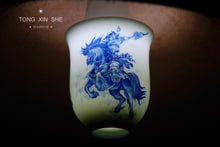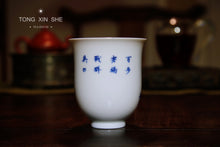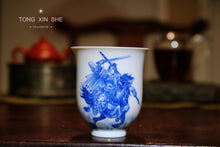
Jingdezhen, China's "Porcelain Capital", has been producing porcelain since the Eastern Jin Dynasty (more than 1,600 years ago), with continuous kiln fires for thousands of years, and numerous famous porcelains have been produced. The unique style of "" is famous at home and abroad. Among them, blue and white, exquisite, pastel, and color glaze are collectively known as the four traditional famous porcelains in Jingdezhen, and blue and white porcelain is also known as "the treasure in the world". It began to appear, and it really matured in the Yuan Dynasty. Blue-and-white porcelain is made of cobalt oxide as raw material, depicting patterns on the porcelain blank, then covering it with a layer of transparent glaze, and firing it once with a high-temperature reducing flame. The Ming Dynasty was the beginning of the heyday of Jingdezhen porcelain. In the second year of Hongwu in the Ming Dynasty, the imperial court was established in Jingdezhen. "Royal Kiln Factory" reached the peak of Ming Dynasty blue-and-white porcelain firing during the Xuande period. In the Ming and Qing dynasties, the Jingdezhen official kiln, which was dedicated to the court, had strict standards for material selection and firing, as can be seen from the large number of porcelain fragments unearthed later. There are 72 complete Jingdezhen blue-and-white porcelain firing processes, including drawing, sharpening, painting, glazing and kiln firing. It takes at least four or five days for a skilled painter to complete such a cup, because of the influence of many factors such as blue and white hair color, kiln temperature, glaze thickness, glaze selection, etc. The quality rate of blue-and-white porcelain from each kiln is not high. In 2018, I was lucky enough to buy some of them. For example, this set of hand-painted cups of the Five Tiger Generals in "Romance of the Three Kingdoms" can be called "No.1 of the Three Kingdoms Military Generals Men's Group".
The Five Tiger Generals refer to the five generals who followed Liu Bei to establish the Shu-Han regime during the Three Kingdoms period at the end of the Han Dynasty, namely Guan Yu, Zhang Fei, Ma Chao, Huang Zhong, and Zhao Yun. Admiral of the Five Tigers".
PS: Because this boutique tea set was purchased in 2018, it was 5 sets and 2 were sold during the teahouse exhibition, so the remaining 3 were sold separately.













































